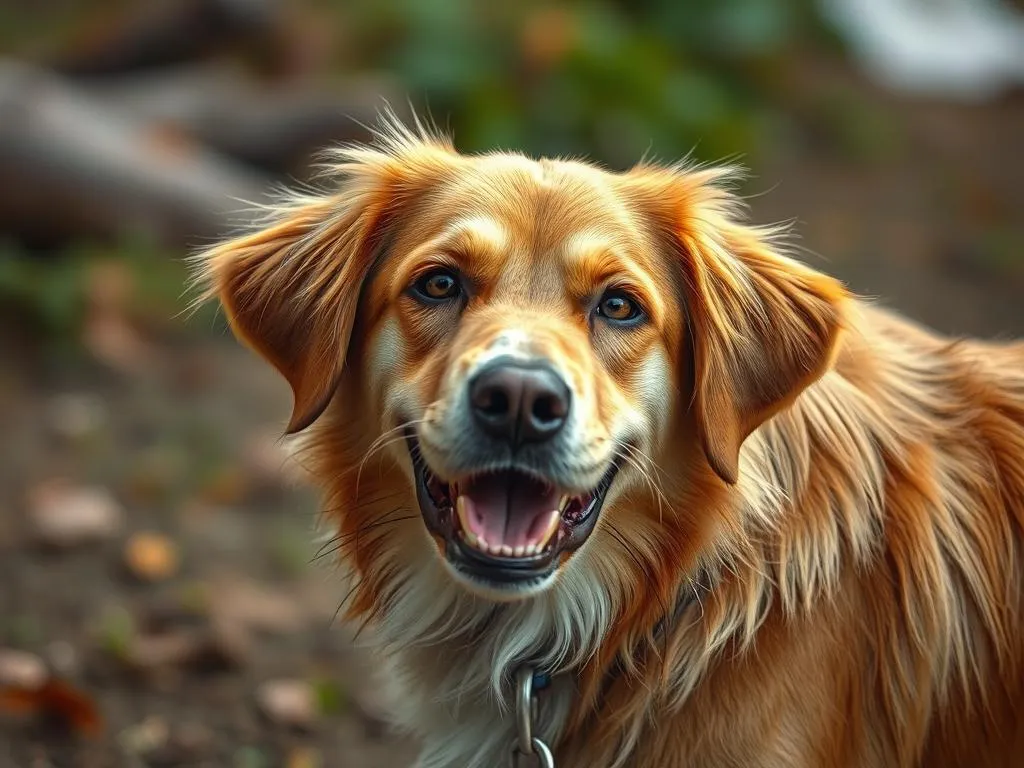
Introduction
Understanding canine reproductive health is essential for responsible dog ownership. One key aspect of this is the concept of a dog going into heat, also known as the estrus cycle. This is a natural biological process that indicates a female dog’s readiness to mate and can significantly affect her behavior and health. Knowing how often dogs go into heat and how to care for them during this phase is crucial for any dog owner.
In this article, we will delve into the intricacies of the heat cycle, including its phases, frequency, signs to look for, care tips, and potential health implications. By the end of this guide, you will have a comprehensive understanding of how to manage your dog’s heat cycle effectively.
Understanding the Heat Cycle
What is the Heat Cycle?
The heat cycle is an important biological process in female dogs, characterized by several distinct phases. The full estrous cycle typically consists of four phases:
-
Proestrus: This is the initial phase, lasting about 9 days. During this time, the female dog may exhibit swelling of the vulva and a bloody discharge, signaling her body’s preparation for mating.
-
Estrus: This phase lasts about 5 to 14 days and is when the female is fertile. Behavioral changes, such as increased affection and a desire to attract males, are common.
-
Diestrus: Lasting roughly 60 days, this phase occurs after estrus. If the dog has mated, she may become pregnant; otherwise, her body will return to its normal state.
-
Anestrus: The resting phase, which can last several months, where the dog’s reproductive system is inactive.
Age of First Heat
The age at which a female dog experiences her first heat varies significantly based on several factors, including breed, size, and overall health. Typically, most dogs will experience their first heat between 6 to 12 months of age. Smaller breeds may go into heat earlier, while larger breeds may not experience their first cycle until they are closer to 18 months old. It’s essential to monitor your dog’s growth and consult with a veterinarian if you have concerns about her development.
Frequency of Heat Cycles
So, how often do dogs go into heat? On average, female dogs will experience heat cycles approximately every 6 months, although this can vary. Some breeds may cycle more frequently, while others may cycle less often. For instance:
- Small Breeds: Often experience heat cycles every 4 to 6 months.
- Medium Breeds: Typically cycle every 6 months.
- Large Breeds: May have cycles every 6 to 12 months.
Understanding these frequencies can help owners prepare for their dog’s heat cycle and manage any associated behavior changes effectively.
Signs Your Dog is in Heat
Physical Signs
Recognizing the physical signs that your dog is in heat is essential for proper care. Some common indicators include:
-
Swelling of the Vulva: One of the most noticeable signs is a swollen vulva, which can become significantly larger than usual.
-
Bloody Discharge: During the proestrus phase, you may notice a bloody discharge, which can vary in color and consistency.
-
Changes in Behavior: Dogs may exhibit heightened affection, restlessness, or even clinginess as they enter heat.
Behavioral Changes
In addition to physical changes, dogs in heat often display distinct behavioral changes:
-
Increased Vocalization: You might notice your dog barking or whining more than usual, as she attempts to attract potential mates.
-
Seeking Male Dogs: A female in heat will often show a strong interest in male dogs, displaying signs of flirtation and attraction.
-
Changes in Appetite and Energy Levels: Some dogs may experience a decreased appetite or increased energy, while others may become lethargic.
Recognizing these signs will help you manage your dog’s environment and prevent unwanted mating.
Caring for a Dog in Heat
Hygiene and Cleanliness
Maintaining hygiene during your dog’s heat cycle is crucial for her health and comfort. Here are some tips:
-
Dog Diapers: Consider using dog diapers designed for females in heat. They can help manage discharge and keep your home clean.
-
Regular Cleaning: Clean your dog’s bedding and living area frequently to prevent staining and maintain a sanitary environment.
Managing Male Dog Interactions
Preventing unwanted mating is essential during your dog’s heat cycle. Here are some strategies:
-
Supervision: Always supervise your dog during walks and outdoor play. Male dogs can detect a female in heat and may be drawn to her, so stay vigilant.
-
Leashing: Keep your dog on a leash when outside to prevent any potential encounters with male dogs.
Emotional Support and Comfort
Dogs can experience mood swings during their heat cycle due to hormonal changes. Providing comfort and emotional support is vital:
-
Calming Activities: Engage your dog in gentle activities like short walks or playtime to help manage her energy levels.
-
Comfortable Space: Create a cozy space where she can retreat if she feels anxious or irritable.
Health Considerations Related to the Heat Cycle
Risks of Ignoring the Heat Cycle
Neglecting to monitor your dog during her heat cycle can lead to various health risks, including:
-
Unwanted Pregnancies: Without proper care, your dog could become pregnant, leading to a host of complications.
-
Health Complications: Conditions like pyometra, a serious infection of the uterus, can arise if the heat cycle is not monitored carefully.
Regular veterinary check-ups are essential to ensure your dog remains healthy during her cycles.
Spaying and Its Benefits
Spaying your dog is a safe and effective way to prevent unwanted pregnancies and eliminate heat cycles altogether. The procedure involves the surgical removal of the ovaries and uterus, and it offers several benefits:
-
Reduced Risk of Health Issues: Spaying significantly reduces the risk of uterine infections and breast cancer.
-
Behavioral Benefits: Spayed dogs may exhibit fewer behavioral issues associated with heat cycles, such as restlessness or aggression.
Common Health Issues During Heat
During a dog’s heat cycle, certain health issues can arise. Being aware of these will help you respond quickly if needed:
-
Infections: Pay attention to any unusual discharge or foul odor, which may indicate an infection.
-
Signs of Distress: If your dog shows signs of discomfort, excessive lethargy, or refuses to eat, consult your veterinarian immediately.
FAQs About Dogs in Heat
How Long Does a Dog Stay in Heat?
The duration of a dog’s heat cycle can vary but typically lasts between 2 to 4 weeks. The various phases will last:
- Proestrus: About 9 days.
- Estrus: Approximately 5 to 14 days.
- Diestrus: Lasting roughly 60 days.
Can Dogs Get Pregnant During Any Phase?
The most fertile period of the heat cycle is during the estrus phase when ovulation occurs. It’s important to note that while dogs can technically become pregnant during the entire heat cycle, the likelihood is highest during estrus.
Alternatives to Managing a Dog in Heat
If spaying is not an option, there are alternatives to manage a dog in heat:
-
Hormonal Treatments: Some veterinarians may prescribe hormonal medications to help manage heat cycles.
-
Behavioral Training: Training can help manage behaviors associated with being in heat, though it may require patience and consistency.
Conclusion
Understanding how often dogs go into heat and the associated care is vital for any dog owner. By recognizing the signs, maintaining hygiene, and being aware of health risks, you can ensure your dog remains healthy and comfortable during her heat cycle. Proactive health management, including regular veterinary consultations, is essential in promoting your dog’s well-being.
As responsible pet owners, it’s our duty to educate ourselves about our pets’ health needs. Being informed about the heat cycle will not only help in managing your dog’s behavior but also in ensuring her overall health and happiness.
Call to Action
Feel free to share your experiences or questions about managing a dog in heat in the comments below. If you have any concerns related to your dog’s health during her heat cycle, consider scheduling an appointment with your veterinarian for professional guidance.









